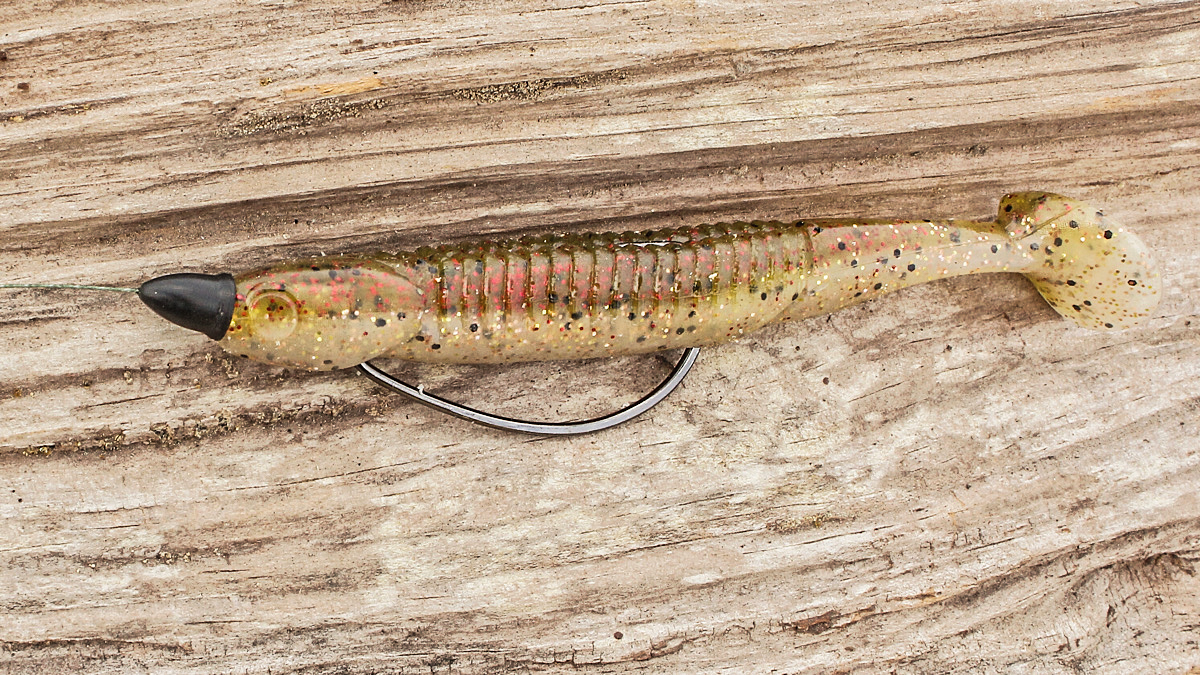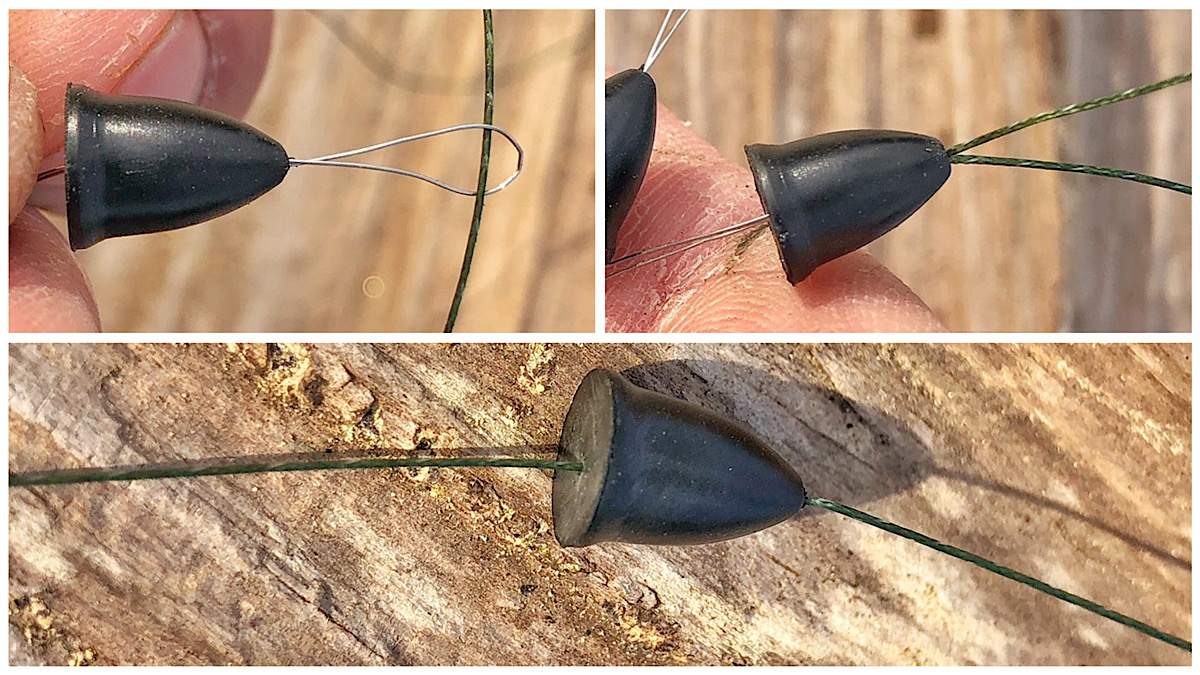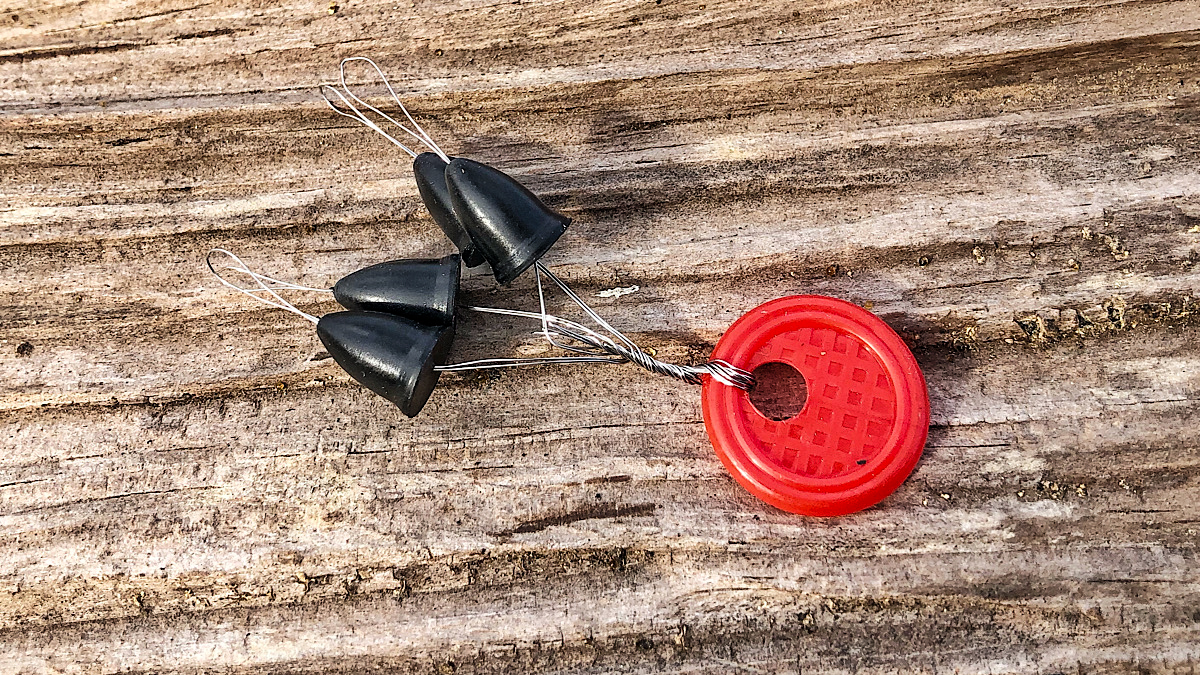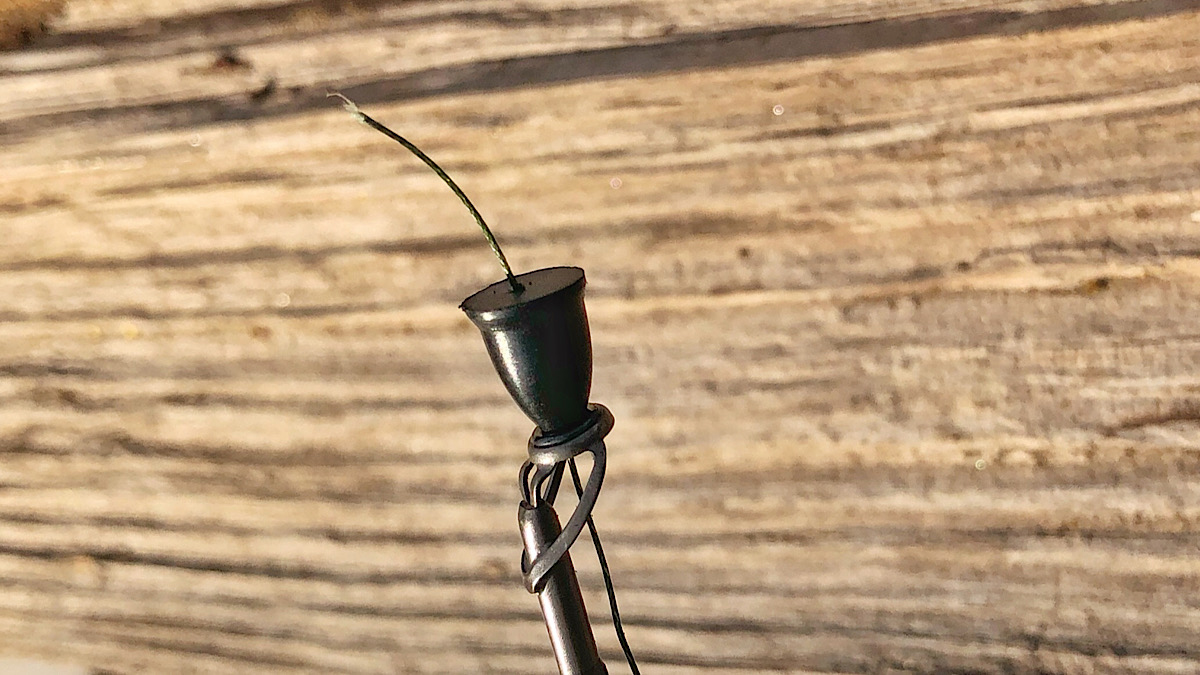Fishing swimbaits around, over and through vegetation is an extremely effective way to catch bass. A technique made popular in Florida and on the West Coast, anglers have now brought this style of fishing back home and have found it particularly effective certain times of the year throughout much of the country.
The concept is pretty simple: Take an extra wide gap hook, a soft-plastic swimbait with a paddle tail and, at times, add a little weight to the belly. This last step can come in the way of a belly-weighted hook or perhaps hanging a bell weight off the shaft. But operating inside these simple parameters will give you a good chance of catching fish.
Still, there is one more element you can add to make this presentation a little more efficient at coming through the cover. And one such product is what we’re here to discuss today is the Halo Fishing Swimbait Coneheads.

What’s the purpose?
When fishing over and through vegetation with a weightless or belly weighted swimbait, there’s a tendency for the blunt nose of some baits to hang on the vegetation. This isn’t a big deal at times and can actually help the bite on occasion. As the bait hangs and you pop your rod tip to free the lure, this break in the consistent action and sudden jolt from the bait often triggers a strike from a trailing bass.
But other times, the nose of a swimbait will catch on a piece of cover and either hang up or tear the vegetation away from the remainder of the cover. At that point, you’re often unable to pop the bait free and you have to either go retrieve the bait or reel it all the way in to pick the trash off of it. This lessens your efficiency with this technique.
Enter the Halo Fishing Swimbait Conehead. Adding this product to the nose of your swimbait, you have a much more durable and aerodynamic point of contact with cover. One that better deflects off of cover and sheds the floating vegetation that tends to bog a swimbait down during the retrieve.

How to attach it
There are a few products out there that are used to accomplish this same purpose. They differ in material and how they’re attached. I have used some in the past that were plastic with a screw lock spring that you screw down into the nose of the swimbait. But the Halo Coneheads are actually made of rubber and can be attached to the line in the same way that a bobber stopper is attached. The Coneheads come in packs of eight consisting of two sets of four Coneheads attached to two plastic disks. There are thin wires that come up from the disk, go through each Conehead and then double back through to form a loop in the wire.
Before you tie on your swimbait, you want to take your line and run about three inches of it through one of these wire loops. Then, pull the Conehead associated with that wire loop up off of the wire and onto your line until the tag end of your line comes through the bottom of the Conehead. Now you should be left with one of the Coneheads on your line and enough line below it to then tie on the hook for your swimbait. If you need a little more line to work with, simply slip the Conehead up your line a bit. Once you’ve tied on your hook and rigged up your soft plastic swimbait, simply pull the Conehead down and snug it up next to the bait.

Advantages of using Coneheads
There’s the obvious advantage we already stated of making the bait more resistant to hang ups and the collection of floating vegetation, pine straw, leaves or other debris I like to refer to as trash. So a Conehead helps keep your bait from getting trash on it.
But the rubber material the Conehead is made out of is also much more durable than the soft plastics that swimbaits are made out of. Again, it’s very similar to, if not the exact same, as the material used to create the bobber stoppers that many of us use. One of the biggest issues with this style of fishing is the constant need to twitch, pull and pop your bait free from cover.
In doing this, the nose of a soft-plastic swimbait often tears. Once a nose starts to lose its integrity, it gets worse and worse until you’re hanging up nearly every cast and you have to re-rig another bait. Well often times, you’ll find that you’ve gone through several baits before you even catch a fish. Using the Coneheads, you’ll still hang cover briefly from time to time, but you eliminate nearly all of the wear and tear on the front end of your swimbait and greatly increase the longevity of each lure. It’s even a good idea to trim a little off the nose of some soft-plastic swimbaits to create a flat space for the Coneheads to be incorporated, since the material is so much more durable than the soft plastic used to make the swimbait itself.

An unintended use and final thoughts
It’s unlikely that this was an intended use, but there’s another way to use these Coneheads. If you often store your rods without a bait or like to keep spare reels spooled and ready to go, you can use one of these Coneheads to ensure that your line doesn’t slip back into the reel or go retreating through your rod guides. Simply add on of these to the loose end of your line and reel it up to the rod tip or to the guide of your reel and your equipment will be ready to go when you come looking for it.
And as for the intended purpose of the Halo Fishing Swimbait Coneheads, this product works exceptionally well. By adding one of these Coneheads out in front of your swimbait, you’ll be sure to have fewer issues with the bait hanging cover and getting bogged down in trash. And the durability of this product ensures you’ll be able to get more fishing time out of each swimbait, requiring a fish to tear your bait up, not just the cover.
The Halo Fishing Swimbait Coneheads are available at TackleWarehouse.com.












